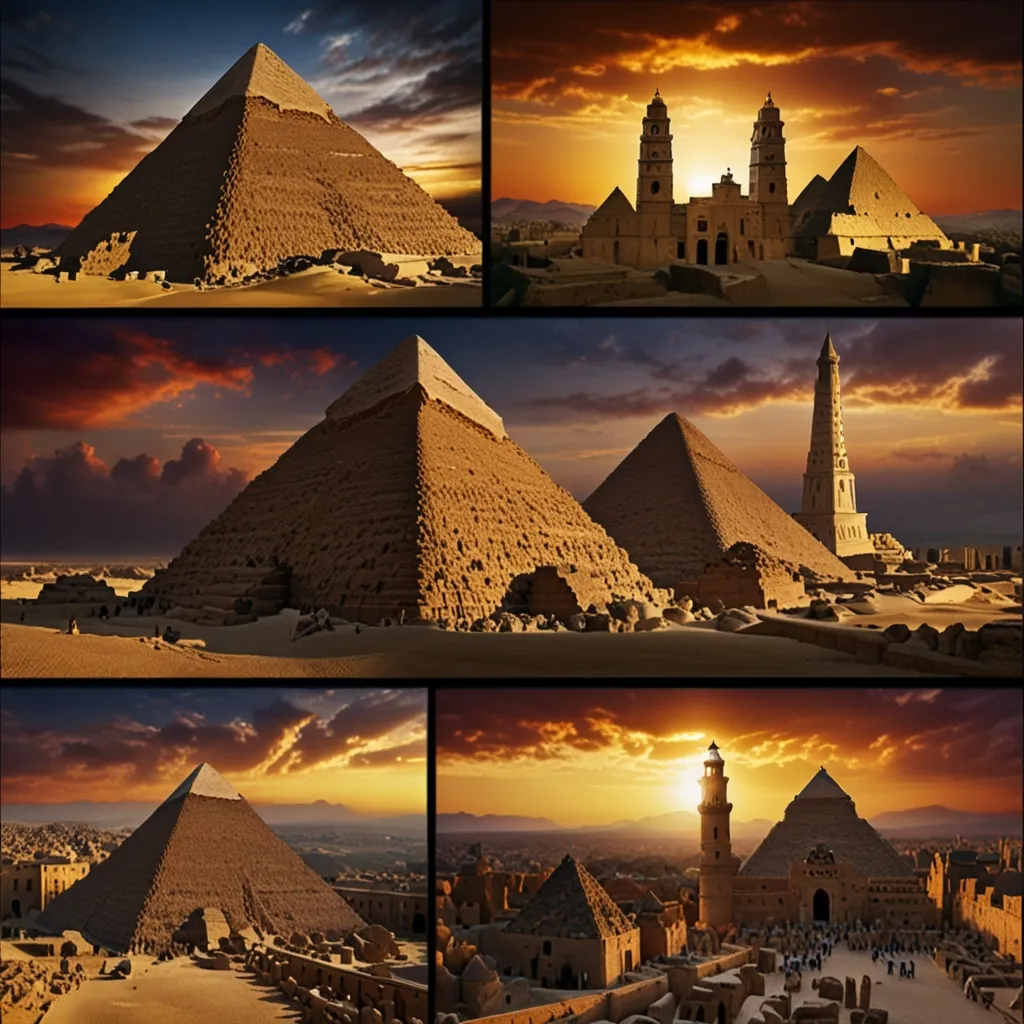The Seven Wonders of the Ancient World are a testament to the ingenuity and creativity of ancient civilizations. These structures, celebrated by travelers and scholars alike, have captivated human imagination for centuries. Let’s delve into the history and significance of these marvels.
The Great Pyramid of Giza, the oldest and only surviving wonder, stands tall in Egypt. Built around 2570 BC as a tomb for Pharaoh Khufu, it is a monumental achievement in ancient engineering. This pyramid took about 20 years to complete and required the labor of thousands of workers. Its original height was around 147 meters, though it has worn down to about 138 meters over time. The pyramid’s sheer scale and precision construction make it a wonder that continues to awe people today.
The Hanging Gardens of Babylon, located in present-day Iraq, are shrouded in mystery. While there is significant debate about their existence, they are often described as a lush garden paradise built on an artificial mountain. According to legend, they were constructed by King Nebuchadnezzar II for his wife. Despite the controversy, the Hanging Gardens remain a fascinating and intriguing wonder.
The Statue of Zeus at Olympia, crafted by the renowned sculptor Phidias, was a colossal statue of the Greek god Zeus. Standing at an impressive 12 meters tall, it was housed in the temple of Zeus at Olympia, Greece. This masterpiece of ancient Greek art was completed around 432 BC and was considered one of the greatest artistic achievements of the ancient world.
The Temple of Artemis at Ephesus, built to honor the Greek goddess Artemis, was a grand structure in present-day Turkey. Known for its impressive size and architectural beauty, it housed many works of art and was a major religious site. The temple was built to commemorate the victory of the Ionian Greeks over the Persians.
The Mausoleum at Halicarnassus, another wonder in present-day Turkey, was an elaborate tomb built for King Mausolus. Completed around 350 BC, it was famous for its stunning architecture and sculptures. The mausoleum was designed by famous architects and sculptors of the time, making it a celebrated example of ancient Greek art.
The Colossus of Rhodes, a massive bronze statue of the Greek sun god Helios, stood tall in Rhodes, Greece. Built in the 3rd century BC, it was one of the tallest statues of the ancient world, reaching a height of about 33 meters. The Colossus was a symbol of the power and wealth of Rhodes and was considered one of the most impressive sights in the ancient world.
The Lighthouse of Alexandria, located on the island of Pharos in Egypt, was a towering structure that served as a beacon for ships. Built in the 3rd century BC, it was the world’s first lighthouse and stood at an impressive height of about 117 meters. The lighthouse used mirrors to reflect sunlight during the day and fire at night, guiding ships safely into the harbor.
These seven wonders were originally listed by ancient Greek travelers who were amazed by the grandeur and beauty of these structures. The list has varied over time, but these seven have remained the most famous and widely recognized. They are a testament to the ingenuity, creativity, and perseverance of ancient civilizations.
Despite their grandeur, all but one of these wonders have been destroyed by natural disasters or human actions over the centuries. The Great Pyramid of Giza remains the only surviving wonder, standing as a testament to the enduring legacy of ancient engineering and architecture.
The legacy of the Seven Wonders of the Ancient World extends beyond their physical presence. They have inspired countless works of art, literature, and architecture throughout history. They remind us of the power of human creativity and the importance of preserving our cultural heritage.
In recent times, new lists of wonders have been compiled, reflecting the diversity and richness of human achievement across different cultures and eras. The New Seven Wonders of the World, chosen through a global vote, include monuments like the Colosseum, the Great Wall of China, and Machu Picchu. These lists continue the tradition of celebrating human ingenuity and creativity.
The Seven Wonders of the Ancient World are more than just historical relics; they are symbols of human achievement and the enduring power of imagination. They remind us that even the grandest structures are not immune to the passage of time, but their legacy lives on, inspiring future generations to build and create.






